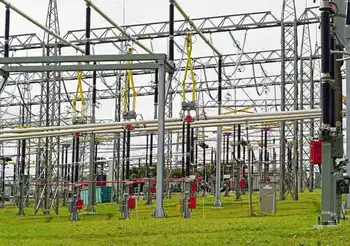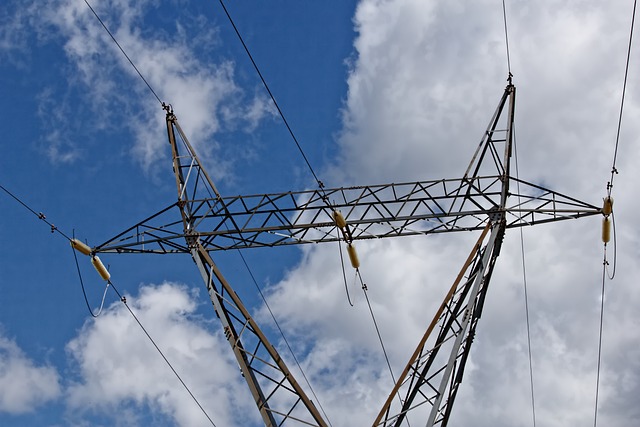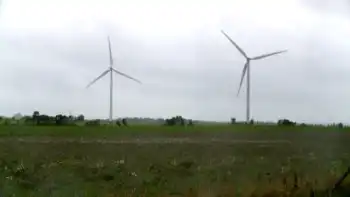US Approves $2 Billion of Canada Cross-Border Transmission
Protective Relay Training - Basic
Our customized live online or in‑person group training can be delivered to your staff at your location.

- Live Online
- 12 hours Instructor-led
- Group Training Available
US-Canada Renewable Energy Transmission Lines deliver low-cost hydropower via HVDC, connecting Quebec and Manitoba to Vermont and Minnesota, boosting grid reliability, cutting emissions, and adding 1,000 MW and 500-kV cross-border capacity.
Key Points
They are cross-border HVDC links bringing Canadian hydropower to U.S. grids, improving reliability and cutting emissions.
✅ 1,000 MW HVDC New England Clean Power Link under Lake Champlain
✅ 500-kV Great Northern line links Manitoba Hydro to Minnesota
✅ Cuts power costs, boosts reliability, supports renewable integration
The U.S. State Dept. has approved nearly $2 billion of high-voltage transmission lines that will bring low-cost Canadian renewable energy to the U.S. The department on Dec. 5 approved construction of the $1.2-billion New England Clean Power Link project, between eastern Canada and Vermont, and last month green-lighted the $710-million Great Northern Transmission Line, between Manitoba and Minnnesota.
Both received the so-called "presidential permit" that is required for construction, operation and maintenance of electric facilities that connect at international borders.
The Clean Power Link is a high-voltage, direct-current transmission project that originates at Quebec's border and ends at a high-voltage, direct-current converter station in Ludlow, Vt., where it will connect to the New England power grid. It will have the capacity to transmit 1,000 MW of power to the U.S. Most of the project will be buried under Lake Champlain.
The project has received eight environmental permits from Vermont and a final environmental impact statement from the U.S. Dept. of Energy late last year.
The 100 miles of cable under Lake Champlain is set to be put in place during one summer construction season, a subsea approach also used on the Maritime Link project in Atlantic Canada, says Don Jessome, CEO of TDI New England. In water that is 150 ft or deeper, the cable will be laid on the bottom of the lake. In shallower water, it will be buried about 4 ft deep.
The remaining underground work will take two summer seasons, Jessome said.
Construction is set to begin next year and be completed in 2018. Under its U.S. Army Corps of Engineers permit, construction must be completed by the end of January 2021.
TDI New England has estimated that the project will reduce power prices in New England by about $2 billion over 10 years, Jessome said.
The 500-kV Great Northern project is a critical link in Minnesota Power’s strategy of balancing renewable- and traditional energy sources, says Al Hodnik, president and CEO of the Allete, Minn., power firm's parent company.
The project will connect with Manitoba Hydro at the U.S. border, where the NEB heard oral traditional evidence during review, and run 224 miles south to an expanded substation in Grand Rapids, Minn. Construction is expected to begin in early 2017, with the transmission line set to come on line in 2020.
Other proposed transmission lines that cross the Canadian border either have received a presidential permit or expect to receive it soon, though the Manitoba-Minnesota line could face delay after energy board recommendations.
TDI New England last year received a presidential permit for a 333-mile project that will transport clean power from the Canadian border to New York City. It will be completely installed underground and underwater, primarily under Lake Champlain and the Hudson River, similar to progress on the Maritime Link cable in Atlantic Canada.
The $2.2-billion Champlain Hudson Power Express will transmit 1,000 MW of renewable hydroelectric power from Quebec and is touted as a way to help New York City reach its goal of powering city government offices with 100% renewable energy by 2050. The city government uses between 4 TWh and 5 TWh annually.
The Champlain Hudson project is fully permitted and awaiting the New York Independent System Operator to complete the final phase of the interconnection study, Jessome said.
The 1,000-MW direct-current line will include two buried, 5-in.-dia solid-state cables. Construction is expected to begin in 2017, with commercial operations to begin in 2020.
Under an agreement between Minnesota Power and Manitoba Hydro, the Canadian company will reduce its hydro generation when Minnesota Power’s North Dakota 500-MW wind farm starts producing power. When winds are light or calm, Manitoba Power will produce more hydroelectric power. Minnesota Power already has exceeded the state’s 25% renewable standard.











